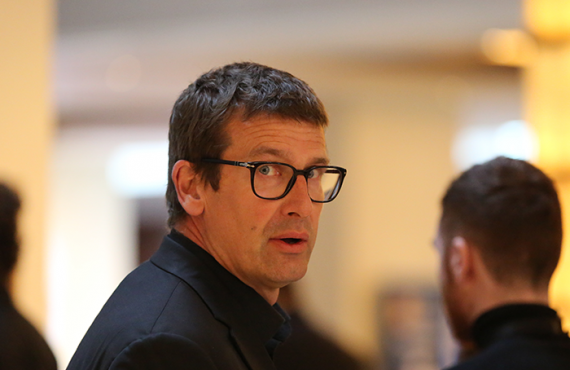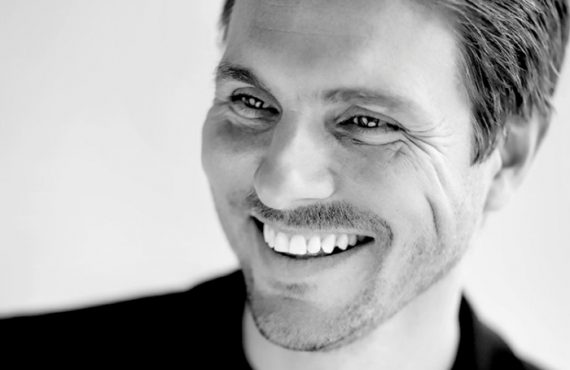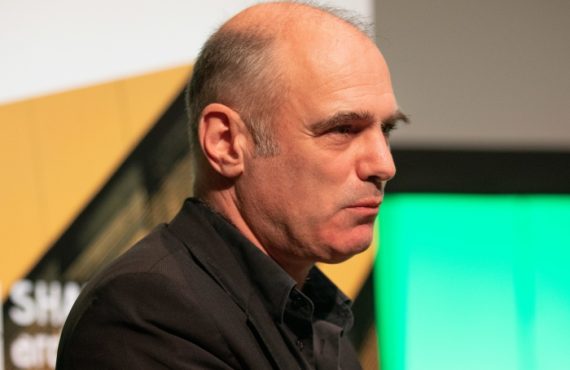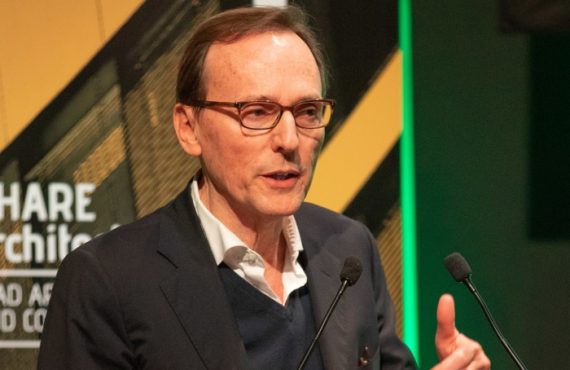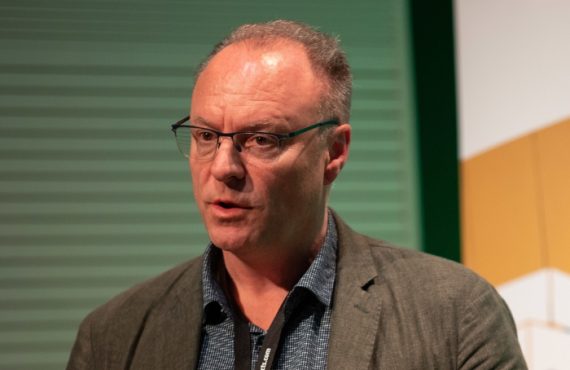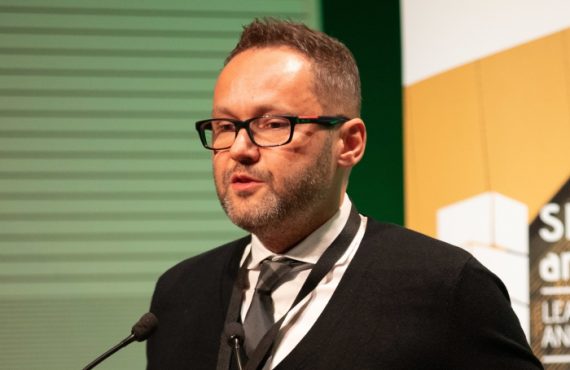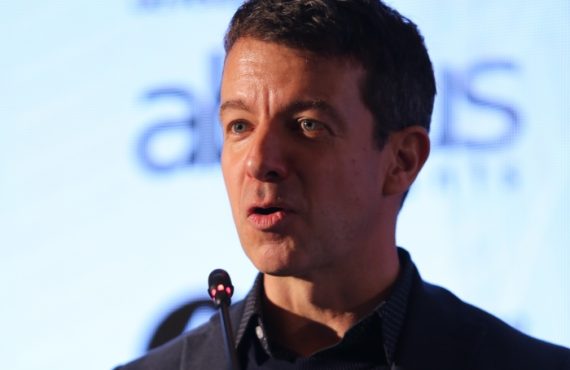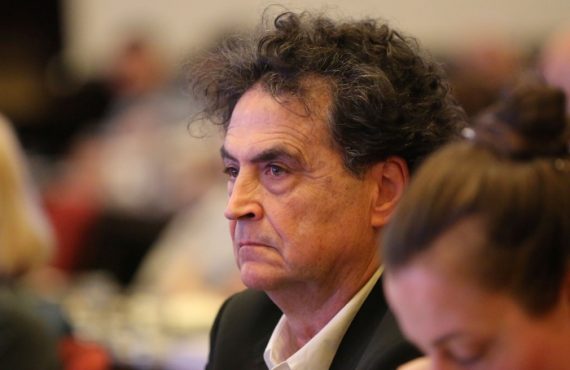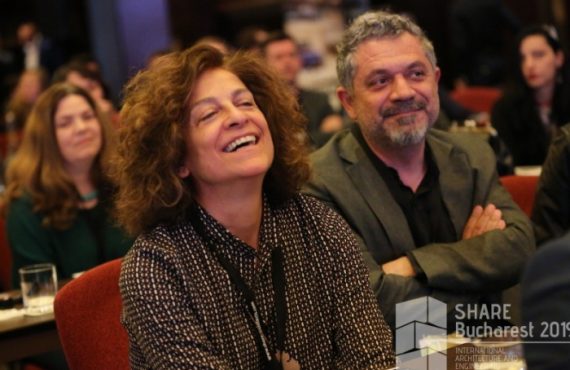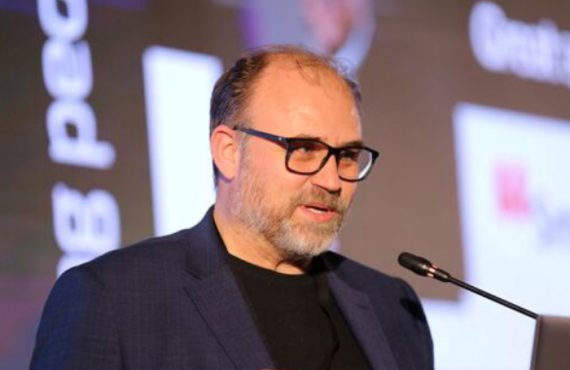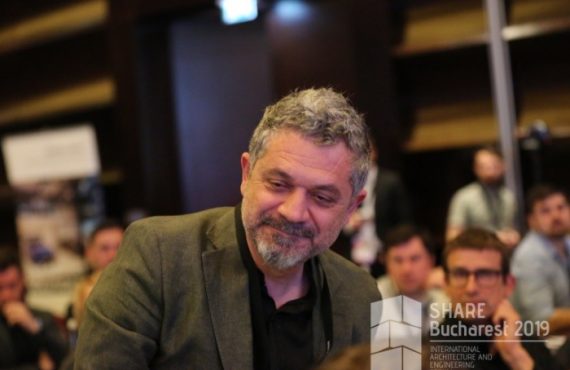What’s important for you when you meet a young architect?
I need that sparkle in the eyes! I need to understand that there is a passion about architecture! If that’s not there, it’s difficult. Of course, they need to be skilled, good with computers and 3D modeling, so they should deal with a large spectrum of different media. But I need the sparkle!
Juergen Mayer H.: Architecture is more than building. It concerns a certain spatial language that captures the moment of a society, the technology and the way we want to build our environment. All these things coming together sum up to something we might call architecture. It also has to look into the potential to survive in the future in terms of economic health, because a project needs to be successful, but it also has to look into the social and cultural contexts in order to contribute to that balance and influence these contexts in a positive way. Then, there are certain technologies that might be developed within a project that can be transferred to other projects. There is a whole knowledge package that comes together if a building or a piece of construction could be defined as architecture.
A.R.M.: You said in an interview that “architecture happens because we believe in a better future”. How do you envision the future?
J.M.H.: The challenge is to understand the present! Future already happens in the next minute, so it really depends on the time span we are looking at. But I know that nothing is more uncertain than the future and any prediction is basically a reflection of the present.
A.R.M.: You also said that “we can explore what is coming through architecture”.
J.M.H.: The role of the architect in relationship to its client is always changing. It is a very complex system. It´s a complicity. I see architecture not so much as a solution to a problem, but rather as a question – the potential of a site. Every building is about trial and error; it might succeed or it might not, but we must do our best to make it succeed.
A.R.M.: Indeed, it is extremely important to understand the question well. So you studied at the University of Stuttgart and you have become a professor teaching in many other top universities. What I find interesting is that your work managed to resonate not only with the architects as professionals, but also with the general public. I believe that being able to make others engage with architecture is a very strong quality of an architect. How did it all start?
J.M.H.: Architecture was not my first choice, but I was interested in systems and how they are developing. I was interested in music and composition – mostly 20th century, classical music – and the logistics behind a piece of music. Art was another focus, the sculptural quality of it and the way you can create a certain abstract spatial atmosphere that opens your eyes and in fact it opens your eyes in reverse, towards the context. In a certain way, the architecture we design is very sculptural, a large sculpture but programmed and contextualized on a very specific location.
A.R.M.: Does your office invest in research? Do you have a research department in your office?
J.M.H.: Research happens with the projects at hand. When we do small scale projects we start with the materials, like temperature sensitive paint, and then look into the aspects that can be designed with that and also create new situations, like seating elements, things where you can leave your mark on. With larger buildings it’s the other way around. We first look into the atmosphere and contextual qualities and then we try to find the right technologies to build it: that’s when we have to be innovative. Somehow this strategic ignorance involved in the phase of design comes back to us and pushes us to be inventive, to work and collaborate with a network of specialists: engineers, sociologists, digital producers. All of these make us push the limits of our discipline.
A.R.M.: How is your office structured?
J.M.H.: Our team consists of about thirty people. We are three partners – I founded the office about twenty two years ago and since then it has a steady growth. It’s a structure that grows organically. All the office members bring their expertise and they also shape the language of our work. Knowledge transfer works really well. The office is quite horizontally structured and is also flexible, from one team to the other – we don’t have design and construction departments. If you’re involved in a project, then you’ll guide the project through the whole process.
A.R.M.: You have said many times that “the process” itself is important in architecture. Is this reflected in the way a project goes from concept to implementation?
J.M.H.: It’s always a sort of testing of different lines of approach, and the survival of the fittest somehow decides in the end which one is appropriate. It’s a extensive process but it contains all the knowledge and experience of more than twenty years. It’s more about guiding along certain presumptions using all the different tools that we have available. That is a good starting point for the next round of discussions.
A.R.M.: What about the process of finding your “distinctive voice” in architecture?
J.M.H.: I find it surprising that this is always a question in architecture. We can only write with our own hand writing, We can only speak with our own voice. If we do architecture, we can only feel comfortable with how and what we articulate our arguments. The question of stepping back from that approach might be a vital one for many people, but we wouldn’t know how to do it without speaking our own architectural language.
A.R.M.: Which would be, in your opinion, the most important quality of an architect?
J.M.H.: Curiosity and staying alert is key. And, you need a lot of patience and persistence. The curiosity that drives us needs to be balanced by the acceptance of long lasting processes and dialogues that keep developing. This is a mayor part of the journey into a project. These two things, curiosity as a short term asset and the patience that helps that curiosity survive for a longer period of time, are essential qualities of an architect.
A.R.M.: What could be the most compelling reason for someone to become an architect nowadays?
J.M.H.: Every period has a different professional context. But architecture always allows you to actively contribute to our built environment. It´s a sensor for change.
A.R.M: How would you describe the state of today’s architecture in Germany?
J.M.H.: Germany has a very active and diverse architectural scene. It includes amazing research in sustainability, new techologies, digital fabrication and innovative intelligent sensing and performance of buildings. Another important part is the involvement and participation of the citizens in questions on how our cities are shaped and what will happen to our commons.
A.R.M.: The president of Georgia discovered your work and invited you to build in the country. How do you see your experience outside Germany and how was the experience on building abroad?
J.M.H.: Building in Georgia at that time was a very exciting moment for us. The country was going through a fast and dynamic transformation, and still is. There is a fascinating new generation that is making the change possible. The first project that we built outside Germany was a hotel in Krakow; we then got projects in Denmark, Belgium and Spain. Working in different countries and cultures definitely reflects back onto your own work and this exchange is extremely valuable since each project comes with different complexities. The responsibility that you have as an architect is the same, no matter if you build at home or somewhere else.
A.R.M.: Maybe there’s a change in the perception depending on where you’re at. People outside your country see you as a specialist with a high level of expertise, whereas in your own country you have to fight to stay relevant.
J.M.H.: Working in a foreign context can bring a different stimulating approach to a project. But the design process doesn’t really change in regards to the necessary sensibilities for a proposal and its effects on that site.
A.R.M.: What do you find distinctive in the way architects approach a problem or a new challenge?
J.M.H.: When you are creating a piece of architecture, it actually affects not only one person but a whole community. You are always visible as an architect and part of a public discourse. That exchange and dialogue offers multiple ways to reflect on your own work and adjust various strategies for a communal success.
A.R.M.: Can you describe your working philosophy in one word?
J.M.H.: Curiosity.
A.R.M.: We would be very interested about your process of becoming the architect of today. What were the moments in your career that influenced your evolution?
J.M.H.: I was always interested in space, sculpture, art and music. At some point I made a decision to study architecture, maybe just because I saw an old black and white photo of Erich Mendelssohn’s Kaufhaus Schocken – a department store in Stuttgart that caught my attention. I studied architecture at Stuttgart University and went to Cooper Union as an exchange student. At Cooper Union I discovered an alternative approach to architecture and why I was choosing architecture as a medium to express my thinking. If my German education then was very good as it gave me all the tools I needed to work in the profession, then Cooper Union helped me turn it into a more specific argument. After, I went to Princeton University, which was a completely different academic context that added a critical and theoretical discourse to what we were doing. We learned to understand and argue how our designs are part of a larger discussion in society. The combination of all three schools, for me, complemented eachothers pedagogical agenda.
A.R.M.: What’s important for you when you meet a young person who wants to become an architect?
J.M.H.: The combination of curiosity and patience is very helpfull to maneuvre in the profession. And you might see it in the sparkle of the eyes! You need to understand that there is a passion about architecture! If that’s not there, it’s difficult. Of course, you need to be skilled in a variety of different media. But you need that sparkle!
A.R.M.: Thank you very much for your time!

Jüergen MAYER – Founder of J. MAYER H. und Partner
J. MAYER H. und Partner, Architekten mbB is an international award winning architecture office with projects at the intersection of architecture, communication, and new technology. From urban planning schemes and buildings, to installation work and objects with new materials, the relationship between the human body, technology, and nature form the background for a new production of space. J.MAYER.H was founded in 1996 by Juergen Mayer H. in Berlin. In January 2014, Andre Santer and Hans Schneider joined as partners in the firm.
J.MAYER.H has a wide array of completed national and international projects and has been honored with many international awards. Juergen Mayer H. studied at Stuttgart University, The Cooper Union and Princeton University. His work has been published and exhibited worldwide and is part of numerous collections including MoMA New York, SF MoMA, Kunstbibliothek Berlin, State of Berlin Museum Prussian Cultural Heritage Foundation, Architekturmuseum der TU München as well as numerous private collections. He is member of the advisory boards at Princeton University Architecture School, The Bauhaus Stiftung Dessau, Flussbad Berlin e.V. and Make Shift Architecture Festival Berlin 2015.
Find out more here: http://www.jmayerh.de/index.php


